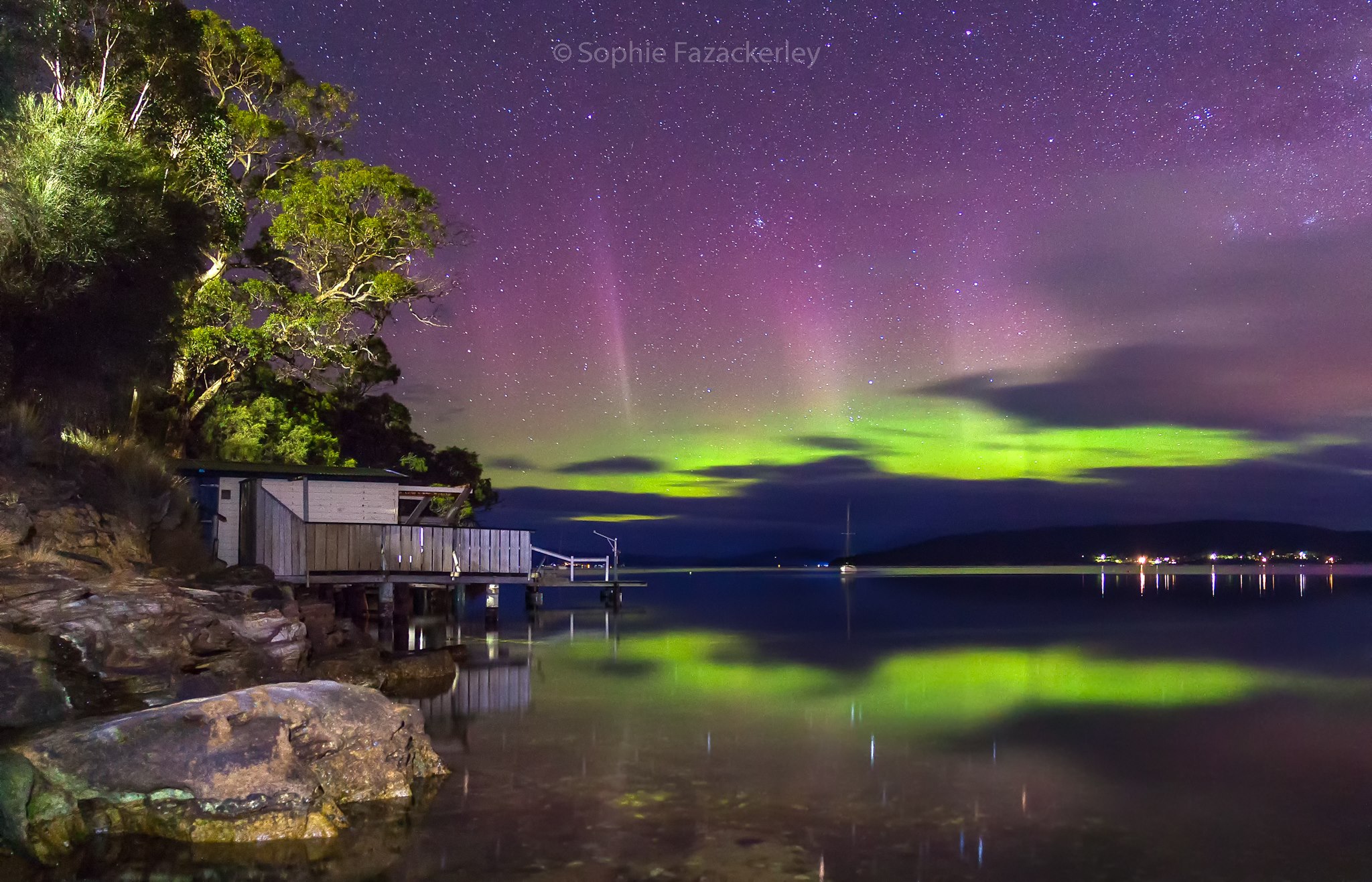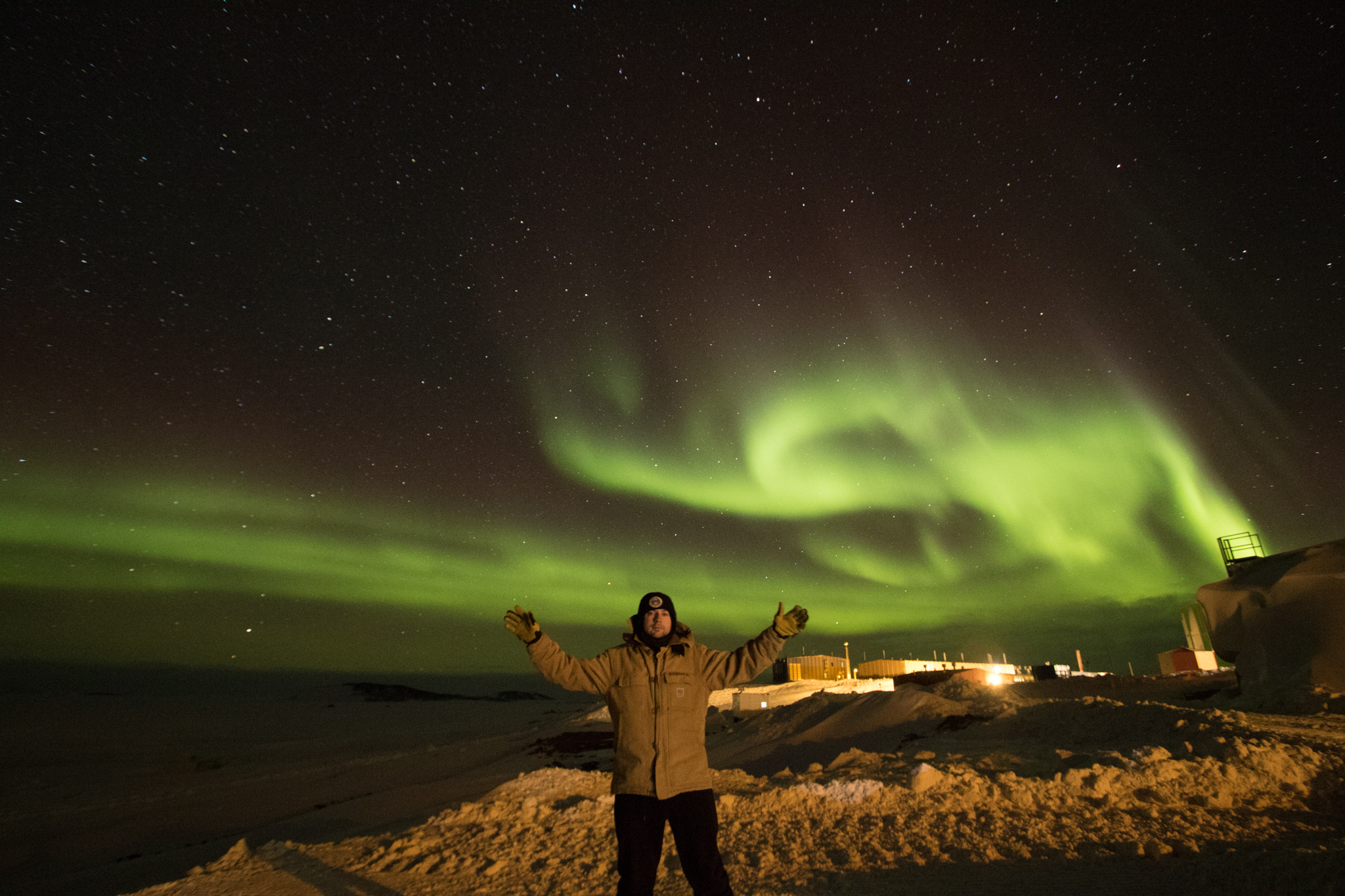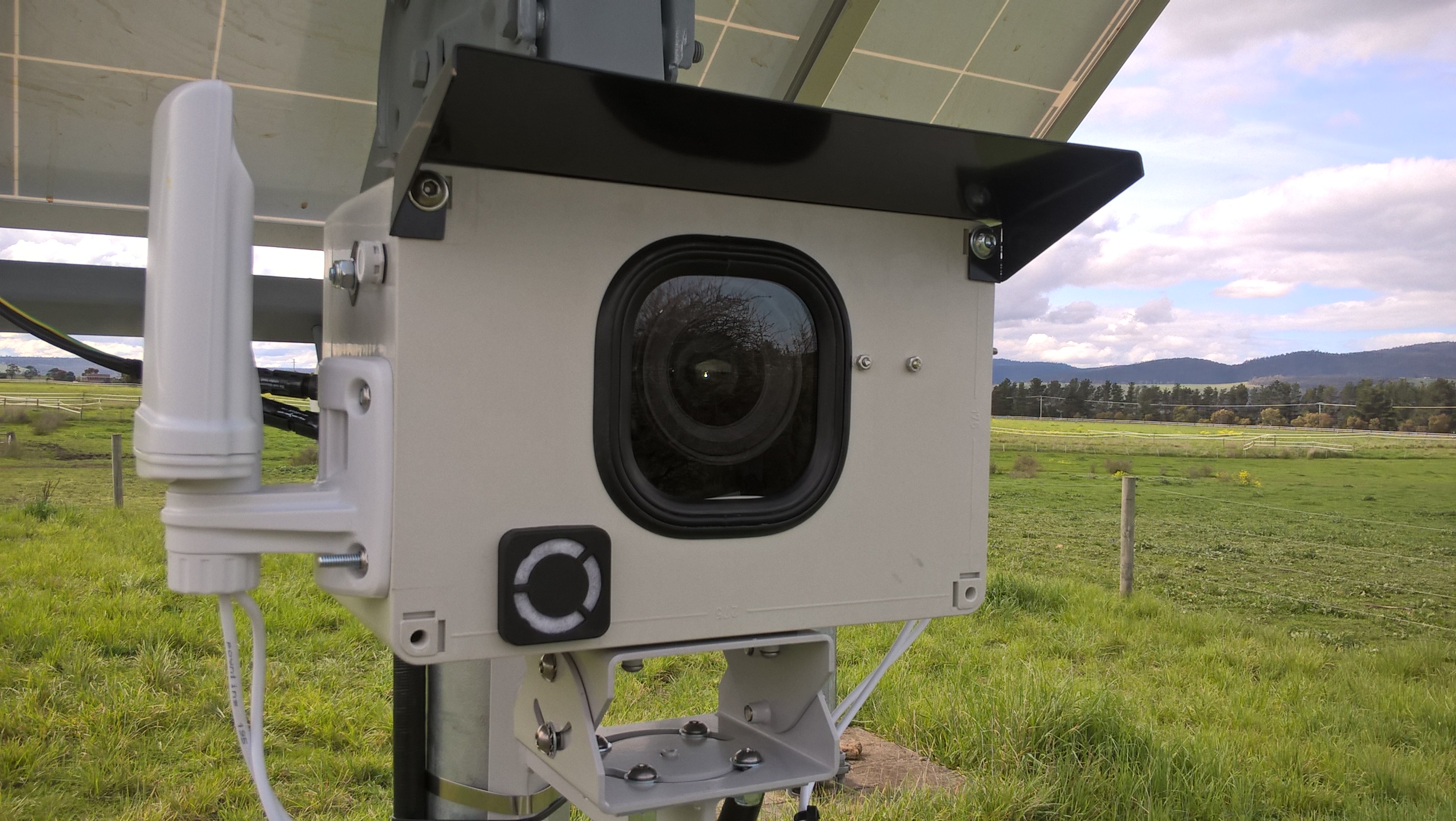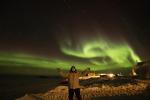On patrol: a 24/7 eye on the aurora australis
05 October 2016
It usually takes a dark night, clear skies, and a phenomenal amount of luck—but knowing if conditions are ripe for seeing the aurora australis will be a whole lot easier, thanks to a new Bureau of Meteorology aurora sky patrol camera.
The sophisticated camera currently being installed in Campania, Tasmania, will enable members of the public to monitor the sky in real time, picking up even the faintest auroras.
So, what causes the dramatic displays of dancing red and green lights, and where are the best spots for seeing the aurora australis for your very own?
An electric performance
Once thought to be portents of doom, auroras—called ‘australis’ in the southern hemisphere, and ‘borealis’ in the northern—are now known to be a remarkably common phenomenon. They’re caused when electrically charged electrons and protons accelerate down the earth’s magnetic field lines and collide with neutral atoms in the upper atmosphere—usually about 100 km above the earth.
These collisions cause the neutral atoms to fluoresce, emitting light at many different wavelengths. The most common aurora colours are red and green, caused by the fluorescence of oxygen atoms, while nitrogen atoms can throw bluish-purple lights into the mix.

Photo: aurora australis, Howden, Tasmania, on 3 September 2016. Credit: Sophie Fazackerley.
During periods of particularly high solar activity, the sun can eject large blobs of plasma called ‘coronal mass ejections’—momentous blasts of material and solar wind that can reach speeds of up to 2000 km per second. When this material approaches earth, most of it is deflected by the planet’s magnetic field. But in the process, huge amounts of energy are transferred to our magnetic field, generating intense geomagnetic storms that can last for two or three days—and produce dramatic auroras over successive nights.
The brightest auroras are concentrated in a ring—the ‘auroral oval’—centred on the earth’s magnetic pole. This ring of light is usually located above the Antarctic and sub-Antarctic, but enlarges and expands during a geomagnetic storm. This explains why auroras are best viewed from Antarctica, Tasmania and parts of the Victorian coast—and are usually low on the horizon.

Photo: Bureau observer Aaron Stanley under the aurora australis, Davis station, Antarctica, 29 August 2016.
Patrolling the sky
The upcoming launch of the Bureau’s online aurora sky patrol camera will provide aurora watchers with real-time guidance on whether auroras are visible from Tasmania.
According to Dr Murray Parkinson, forecaster in the Bureau’s Space Weather Forecast Centre, Antarctica and Tasmania are the best spots in the southern hemisphere for seeing the aurora australis—although most people would not naturally recognise the phenomenon when it is low to the horizon.
‘Auroras are generally fickle creatures that do not show themselves to everyone, and I certainly wouldn’t advise anyone to visit Tasmania just to see one,’ he says. ‘You ideally need a dark night with very little cloud, no bright moon, and no light pollution—preferably on a dark beach or headland.
‘If you don’t go “wow” when you look up at the Milky Way, you can usually forget about looking for auroras. To the naked eye, fainter auroras will just look like a white flickering light—it’s only through long exposure photography that the brilliant colours are revealed.’
Auroras are more likely to occur close to the equinoxes, in late March and late September, but Dr Parkinson cautions against using this as a guide because incredible displays can occur at any time of year.
The winter months are naturally good aurora-watching times, simply because the nights are longer. The brightest displays typically last for about 1–3 hours, and the best viewing times are generally between 10 pm and 1 am.

Photo: the Bureau is installing a new aurora sky patrol camera in Campania, Tasmania.
Advance warnings
The Bureau provides a free aurora alert service, which sends an email (or paid SMS messages) to subscribers to help them identify locations and times that are expected to be conducive to auroras. These notifications include both ‘Aurora Watch’ forecasts, in which the Duty Forecaster predicts that conditions are favourable for viewing auroras over the next one to three nights, and ‘Aurora Alerts’ warning that auroras should be visible now in the right locations.
The Duty Forecaster regularly includes comments about the possibility of observing auroras in the daily round-up of Today’s Space Weather. Further information on auroras is also available on the Bureau's Space Weather Services website.


Comment. Tell us what you think of this article.
Share. Tell others.